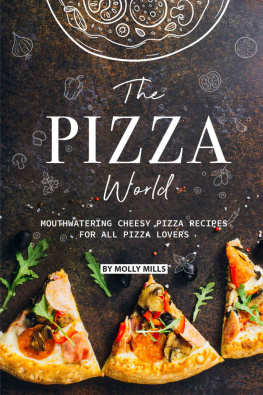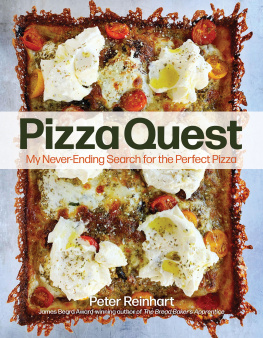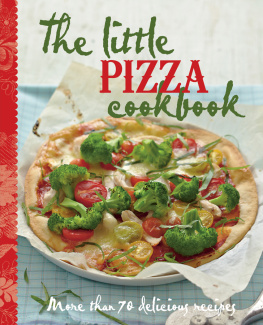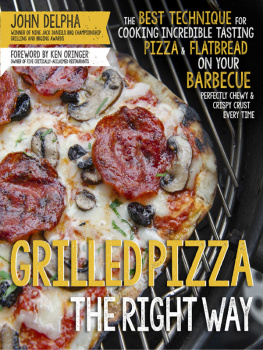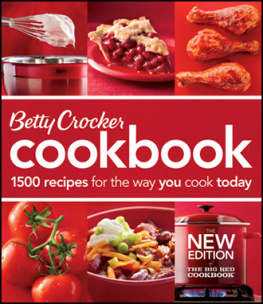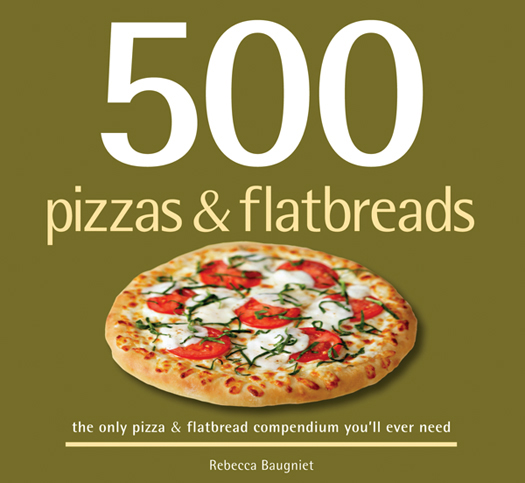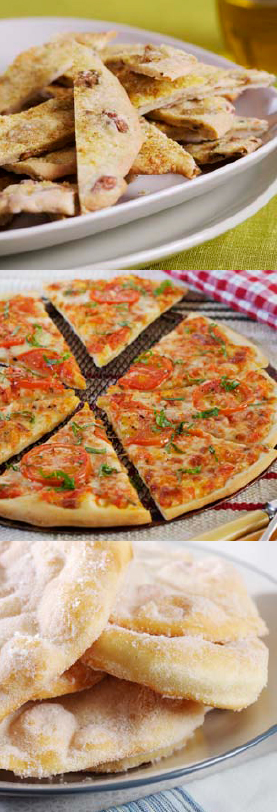A Quintet Book
Published by Sellers Publishing Inc.
161 John Roberts Road, South Portland, Maine 04106
Visit our Web site:
e-ISBN: 978-1-4162-0821-1
500 Pizzas & Flatbreads copyright 2014 Quintet Publishing Limited. All rights reserved under International and Pan-American copyright conventions. By payment of the required fees, you have been granted the nonexclusive, nontransferable right to access and read the text of this e-book onscreen. No part of this text may be reproduced, transmitted, downloaded, decompiled, reverse engineered, or stored or introduced into any information storage and retrieval system, in any form, by any means, whether electronic or mechanical, now known or hereinafter invented, without the express written permission of Sellers Publishing, Inc. e-books.
August 2014
This book was designed and produced by
Quintet Publishing Limited
4th Floor, Sheridan House
114-116 Western Road
Hove, East Sussex
BN3 1DD
Project Editor: Marianne Canty
Designer: Roland Codd
Art Director: Sofia Henry
Photographer: Mike McClafferty
Food Stylist: Wendy Lee
Managing Editor: Donna Gregory
Publisher: James Tavendale
introduction
Flatbread has existed for as long as humans have been grinding grains, mixing the resulting flour with water, and baking over hot coals. And for almost just as long, people have made these flatbreads more interesting by covering them with other assorted ingredients.
It is the oldest variety of prepared food one that appears all over the globe, but that takes on different shapes and textures from region to region, depending on what basic ingredients are available in that part of the world. Ancient Greeks called theirs plakuntos and covered them with blends of herbs, garlic, and onion. The Aztecs called theirs tlaxcalli and made them with maize, which had first been soaked in water mixed with lime to help remove the husks and soften the grain. Many flatbread recipes have survived through the ages and remain close to those original culinary discoveries. They feature flours made from one or more grains wheat, millet, rye, maize, rice, and buckwheat, to name but a few. They may also be made from grated tubers or root vegetables, such as potatoes, cassava, beets, and turnips. With the advent of the global food market, those living in urban areas and even those removed from the city with access to the Internet and home deliverycan taste flavors from far-off countries and evoke memories of ancient civilizations in their own home kitchens.
Flatbreads fall into two main categoriesthose leavened with yeast or another leavening agent, and those that are unleavened. In the category of leavened flatbread, pizza is the one to have become a truly international phenomenon over the past 60 years, although focaccias, pitas, naans, and others have been gaining more widespread popularity. What sets pizza apart from other flatbreads is the use of tomato as the main topping ingredient. This became common practice around Naples in the eighteenth century and rapidly grew in fame throughout Italy. One hundred years later, pizza was brought to the United States by Italian immigrants and began another metamorphosis. Pizzerias began appearing in cities throughout the country and soon different trends in pizza-making started to emerge, with such delicious results as the Chicago deep-dish pizza, thin crust pizzas, and pan pizzas.
In response to these developments, Neapolitan pizza makers formed an association in 1984 to protect the characteristics of the original Neapolitan pizza, imposing specific rules to be obeyed in order for a pizza to qualify as an authentic Neapolitan pizza. The association accepts only Marinara and Margherita Pizzas made entirely by hand no mixers or rolling pins allowed. They must measure no more than 12 in. (30 cm.) across and be baked in a wood-fired oven for no more than a minute and a half. Fortunately, the True Neapolitan Pizza Association will not be inspecting your kitchen, so have fun and experiment with your favorite topping combinations. Whichever recipe you try first, when you take part in this time-honored process, you are sure to enjoy the results.
equipment
If you plan on making pizzas and flatbreads on a regular basis, you may want to invest in a few pieces of equipment that will encourage successful results, such as a baking stone and a pizza peel. However, these items are not essential to the process, and most of the recipes in this book can be made with ordinary kitchen items.
measuring cups & spoons
Baking is an exact science, so correct measuring equipment is essential. Always use calibrated measuring cups and proper measuring spoons. Flour should be spooned into measuring cups for accurate measurements.
mixing bowls & standing mixers
A variety of mixing bowls is essential in the bakers kitchen. You will need a large bowl in which to make the dough and let it rise. A glass 2-quart measuring bowl can be especially useful for measuring how much your dough has risen. Medium and small bowls are useful for preparing fillings and toppings. A standing mixer with a dough hook attachment allows you to perform other tasks in the kitchen while the kneading is occurring.
rolling pins & boards
Pizza purists will insist that pizza dough must be stretched out by hand, but until you have mastered this technique, a rolling pin is a very useful tool. Many models of rolling pin are available, so choose one that suits your needs and which you find comfortable to work with. The preferred model among bakers remains the wooden French rolling pin with tapered ends. However, in a pinch, you can always use an empty wine bottle. A large wooden board is ideal for rolling out pizza dough, but a well-cleaned countertop will also work nicely.
pizza peels, baking stones & tiles
A pizza peel, or paddle, is a flat, smooth, rounded board with a long handle and tapered front edge that facilitates sliding pizza on and off the baking stone or tiles. It is usually made of hardwood, but it can also be found in aluminum. A flat cookie sheet can also be used as a makeshift pizza peel. Baking stones or quarry tiles are used for making pizzas and flatbreads that require a direct burst of heat to achieve a crisp crust, such as thin-crust pizzas, pizza with a Neapolitan crust, and flatbreads such as naan and pita (which are traditionally baked on oven floors or walls). Baking stones are thick, heavy, round or rectangular pieces of natural lead-free clay that mimic the baking conditions of brick-floored wood-burning ovens. Baking stones are placed on the bottom rack of electric ovens and directly on the floor of a gas oven and preheated with the oven. Unglazed quarry tiles may also be used for the same effect. Peels and baking stones are available in various sizes from gourmet specialty stores or online kitchen equipment suppliers.
skillets, baking pans, cookie sheets & parchment paper


